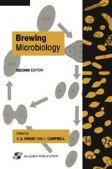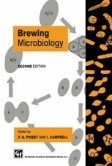Search
Search Results
-
The Linkage Between Antibiotic and Disinfectant Resistance
The widespread prevalence of antimicrobial resistance is a global threat, as stated by the World Health Organization. Many pathogenic isolates that...
-
Antimicrobial and bacteriostatic activity of surfactants against B. subtilis for microbial cleaner formulation
Cleaning products containing live bacteria that form spores of Bacillus spp. as active substances are becoming increasingly common in probiotic...

-
Application of Emulsifiers to Reduce Fat and Enhance Nutritional Quality
Food emulsifiers represent one of the most important classes of food additives in the industrial manufacture of food products. The extensive range of...
-
Surfactants in Sludge-Amended Agricultural Soils: A Review
Surfactants are included in different detergent formulations and are one of the most ubiquitous and important families of organic compounds. The...
-
Astonishing diversity of natural surfactants: 4. Fatty acid amide glycosides, their analogs and derivatives
FA amide glycosides are of great interest, especially for the medicinal and pharmaceutical industries. These biologically active natural surfactants...
-
Characterised Reactions in Aerobic and Anaerobic Utilisation of Linear Alkylbenzenesulphonate (LAS)
Commercial linear alkylbenzenesulphonate surfactant (LAS) is known to be fully degradable aerobically, as a carbon and energy source for bacteria,...
-

-
Cleaning and disinfection in the brewing industry
‘Cleaning and disinfection in the brewing industry’ encompasses such a broad area that it would be impracticable to concentrate on any particular...
-
Cleaning and disinfection: methods
The operations of cleaning and disinfection are essential parts of food production and the efficiency with which these operations are performed...
-
Toxicology of Mono-, Di-, and Triethanolamine
The family of ethanolamines, including monoethanolamine (MEA), diethanolamine (DEA), and triethanolamine (TEA), offers a broad spectrum of...
-
Cleaning and disinfection in the brewing industry
’Cleaning and disinfection in the brewing industry’ encompasses such a broad area that it would be impracticable to concentrate on any particular...
-
Complete degradation of xenobiotic surfactants by consortia of aerobic microorganisms
Linear alkylbenzene sulphonates are primarily attacked via a hydroxylation of the alkyl chain from the methyl group followed by β-oxidation. The...
-
The use of reverse micelles for the separation of proteins
Liquid-liquid extraction technology has been successfully used in the separation of compounds in chemical, petrochemical, or hydrometallurgical...
-
Fate and Effects of the Surfactant Sodium Dodecyl Sulfate
Surface-active agents, or surfactants, are detersive chemicals characterized by having two different moieties, one polar and the other nonpolar, at...
-
Decontaminating Pesticide Protective Clothing
Exposure to some pesticides poses risks of cancer, birth defects, genetic mutations, and sterility (Boraiko 1980). Of the three routes of chemical...
-
Growth and Survival of Undesirable Bacteria in Cheese
The growth and survival of bacteria in foods, particularly in dairy products such as cheese, have been studied extensively; however, changes in...
-
Soil Water Repellency
Water repellent soils exhibit hydrophobic properties when dry, resisting or retarding water infiltration into the soil matrix (Brandt, 1969a)....
-
Biological and Ecological Effects of Dispersants
In the marine environment, commercial dispersants have been employed as part of the clean-up strategy following major oil spills since the late...
